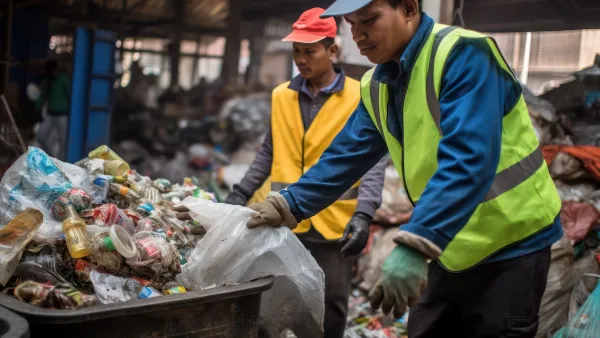Over the next few decades, half of global economic growth is predicted to come from the slums of developing world cities. Gaia Vince believes the key to the coming urban revolution is how these shantytowns evolve.
"[A]lthough scenes of squalor, accumulation of rubbish and polluted waters look like destitution, slums are rich seedlings for the vibrant cities of the future," says Vince. "Many of today's established capitals, including London and New York, launched from similar embryonic beginnings." There are currently 1 billion dwellers in informal housing around the world and the United Nations predicts that one in four people will become an urban squatter by 2030, increasing to one in three by 2050.
When slum dwellers organize together, they can create transformative innovations. For example, in Delhi, the Children's Development Khazana is run by street children and allows 1,000 youth to safely store their earnings. In Pakistan, residents of the Orangi slum built their own sewerage system in the 1980s and successfully reduced infant mortality. "Cooperation, whether to achieve wider policy change and improvement in working conditions or build essential infrastructure, is a slum’s biggest strength and is essential to nurture as cities 'upgrade' their poorest areas," says Vince, though he warns, "That's not to glorify life in these communities."
"Governments are beginning to accept the social wealth of these existing communities," continues Vince, "and realising that the best way to capitalise on that is to incorporate these dynamic, lively parts of the city into the established whole, by providing the tools for growth, integration and citizen strength." Medellin, Colombia, the former murder capital of the world, was transformed "from terrible conditions to light modernity" and "the murder rate has plummeted." However, only those with independent governance and strong finances may have the resources to implement large-scale change.
Vince concludes: "As most of the urban growth in coming decades will be in poor countries, particularly in Asia and Latin America (Africa’s urbanisation is stark and rapid only in a few countries, although this could change), it is associated with a general rise in global resource use as people improve their standard of living. The challenge then is to create the most sustainable cities – ones where people lead dignified lives without generating excessive waste and pollution."
FULL STORY: Slums and the future of cities

National Parks Layoffs Will Cause Communities to Lose Billions
Thousands of essential park workers were laid off this week, just before the busy spring break season.

Retro-silient?: America’s First “Eco-burb,” The Woodlands Turns 50
A master-planned community north of Houston offers lessons on green infrastructure and resilient design, but falls short of its founder’s lofty affordability and walkability goals.

Delivering for America Plan Will Downgrade Mail Service in at Least 49.5 Percent of Zip Codes
Republican and Democrat lawmakers criticize the plan for its disproportionate negative impact on rural communities.

Test News Post 1
This is a summary

Test News Headline 46
Test for the image on the front page.

Balancing Bombs and Butterflies: How the National Guard Protects a Rare Species
The National Guard at Fort Indiantown Gap uses GIS technology and land management strategies to balance military training with conservation efforts, ensuring the survival of the rare eastern regal fritillary butterfly.
Urban Design for Planners 1: Software Tools
This six-course series explores essential urban design concepts using open source software and equips planners with the tools they need to participate fully in the urban design process.
Planning for Universal Design
Learn the tools for implementing Universal Design in planning regulations.
EMC Planning Group, Inc.
Planetizen
Planetizen
Mpact (formerly Rail~Volution)
Great Falls Development Authority, Inc.
HUDs Office of Policy Development and Research
NYU Wagner Graduate School of Public Service




























